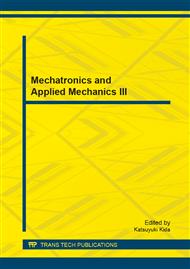p.503
p.510
p.515
p.519
p.524
p.534
p.540
p.545
p.549
Stress Fields and Energy Analysis during the Fracture of Composite Materials
Abstract:
The present study evaluates stress fields, the stress intensity factor and energy release rates at the time of the cracking in a composite material. Our problems are formulated using two materials having different parameters such as the shearing modulus and the Poissons ratio. After having determined the displacement and stress fields, one homogenized the latter in order to allow comparing the results with those of other researchers. During the propagation of the main crack, the surrounding dislocation induces two effects: amplification effect which increases the stress at the main crack-tip and a shielding effect which reduces the propagation of the main crack. Finally, Energy Release Rates (ERR) associated to the different transformation inside the damage zone is evaluated on the basis of the superposition of all energies: the energy due to the main crack, the energy due to the existing dislocation and the energy due to the interaction.
Info:
Periodical:
Pages:
524-533
Citation:
Online since:
February 2014
Authors:
Keywords:
Price:
Сopyright:
© 2014 Trans Tech Publications Ltd. All Rights Reserved
Share:
Citation:


